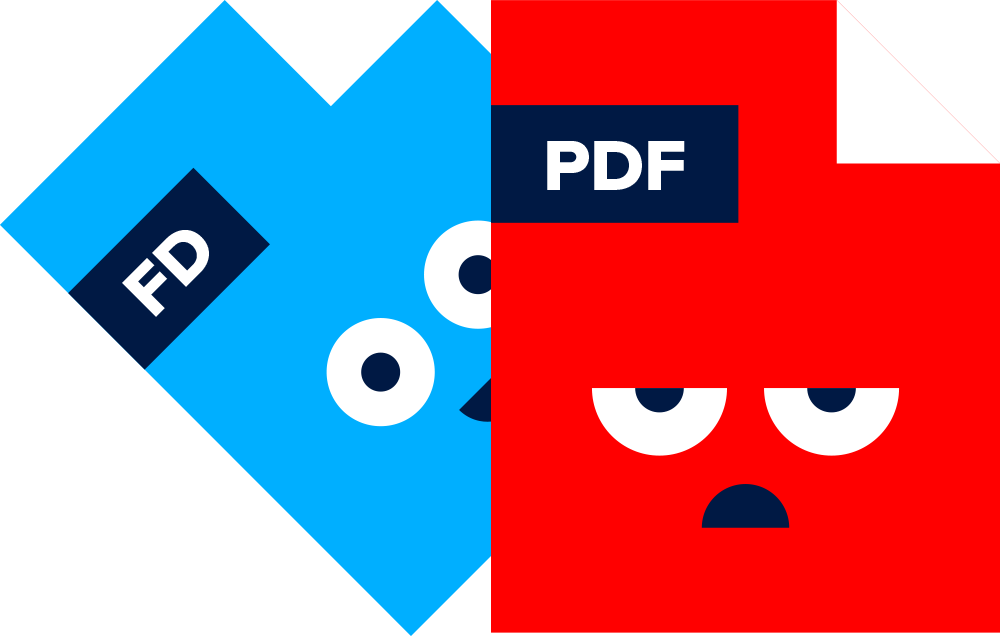Every content manager has had That Report. You know the one. The report/white paper/eBook that just. never. ends. No matter what you do, there is more feedback, more mistakes, and more problems. The deadline approaches (and passes), and the thing still isn’t online — everyone’s upset, and it’s all your fault.
I find myself talking about That Report a lot lately. Given that I work for a content creation platform with a mission to empower people to create more engaging content at scale, content processes come up a lot. In fact, when I first learned about the Foleon platform, I had a serious moment when I realized it was exactly what I’d been looking for in the days of That Report.
Today, one of my missions is to prevent as many content managers as I can from having to deal with That Report. And in this article, I’m going to tell you exactly how to do it.
Common Pitfalls in Report, White Paper, and eBook production
First, it’s important to understand a couple of things. Namely: what turns a seemingly simple deliverable into That Report?
I will use my own personal anecdote as an example. The task at hand was to create a horizontal industry report based on third-party research. Our final product would be a gated lead generation magnet. I was the Content Manager leading the content team, and we had one key stakeholder owning the project.
- Lack of clear expectations: We received the research from the agency we were working with. It was neatly organized into findings and content suggestions. The key stakeholder passed it off to the content team and told us we had full creative freedom.
- Not planning feedback at the right points in the process: After the research got passed on to my team, the key stakeholder was off for 3 weeks. The plan was that we would produce the report while the stakeholder was away, and she would give her final feedback when she returned.
This turned out to be a very bad plan.
She returned, and the (finished) report was the complete opposite of what she’d envisioned. The deadline was approaching, and we had precious little time to make adjustments. We were so far off the mark that she would not publish the report without an overhaul. - The creators ran with their own vision: We created this report in a vacuum. The copywriter read the research and had another interpretation of the findings, so she wrote the report from that angle. Then it was passed off to the designer, who, also excited to be given complete creative freedom, designed to her heart’s content. Both creators poured so much time and creativity into creating something they loved, but ultimately, it wasn’t what the stakeholder had envisioned. In the end, it was a waste of time, energy, and creativity, which was completely demotivating.
- It was a whale of a report, which made it tedious to give and process feedback: In a nutshell, the report lacked a defined scope. We received a ton of research from the agency we were working with, so the report grew and grew. More stats, more takeaways. It was enough information for a few reports, honestly. And by the time it was finished, it was just too much to process. We’d created a monster.
What happened next? Well, In a wave of utter desperation, I pulled the creators off of the project, rewrote it myself, and got someone else to do the design. 😬 I know.
Instead of sitting down with my team, processing the feedback, and coming up with a solution together, I took matters into my own hands. Did it get the project done? Yes. Did it damage the confidence of my team and their relationship with me and the stakeholders involved in the project? Yes. Would I do it all differently today? Hell to the yes.
Never ever create “That Report” again
Looking at the summary of That Report, one factor is abundantly clear: complete creative freedom is bad news.
Projects — and people — need boundaries.
We need a structure in which to operate; otherwise, things get out of control. So the goal is to create a structured environment that is clear enough to guide but not so structured that it stifles creativity.
With that in mind, here’s how you turn That Report into the best dang deliverable anyone has ever seen or had the pleasure of working on.
- Get your process right. Here’s the one I’ve found to be most effective:
a. Concept
b. Kick-off
c. Process
d. Milestones
e. Feedback
f. Debrief
g. Review
It’s simple, and it gets the job done. The most important thing is how you communicate the process with everyone involved. Take the time to define expectations at each point. Create clear briefings and go over them in detail together with the full project team to make sure everyone is on the same page. - Ask clarifying questions. In other words, there’s no such thing as full creative freedom. Help your stakeholders develop their ideas and describe what they envision. It gives your creators direction and reduces the risk of a disappointing delivery.
- Set boundaries. If you can’t get the content deliverable done right with your key stakeholder out of the mix for 3 weeks, say it and stick to it. Define what you can and can’t do, and negotiate until everyone agrees that the process and expectations are realistic. As the Content Manager, it’s up to you to set your team and the project up for success.
- Communicate and have meta-conversations about communication. Make sure you understand the following about everyone in the project team:
a. Communication style
b. Preferred channels for communication
c. Preferred methods for giving and receiving feedback (written, verbal, combo, other)
Discover: Annual report ideas to turn your content into showpieces.
How good tech can make content creation heavenly
Let me say this: Technology is not a replacement for good communication.
That said, tech can help a lot. I mentioned in the beginning that Foleon would have solved a lot of issues we had in That Process, and one of the big reasons is because it allows many more people to get directly involved in the creation process — within boundaries.
Boundaries fuel productive creativity
One of the reasons why I pulled everyone off of That Report and did it myself was because, by the time the massive report had been put into a PDF, it was too difficult to make all of the adjustments required. The design had been set, and trying to give copy and format feedback for the designer to then work through in InDesign was way too tedious.
Flexible design format
Working in a Content Creation Platform with an intuitive drag-and-drop editor makes it much easier to adjust your design after the fact. It also provides the ability to use templates and apply your brand guidelines directly to the Foleon Doc, so you don’t have to start from scratch every time. Put simply: it’s flexible.
Roles and permissions
The other thing I love about it is that it offers user roles. That means you can add anyone as a writer, for instance, and all they can do is adjust copy. It sounds like a simple thing, but I can’t tell you how much time and frustration this saves on the back-and-forth between stakeholders, copywriters, and designers. It means you can let your writers write and your designers design.
Engaging, responsive format
Then there’s the final output. I won’t go into it too much in this article, but I’ll leave some examples so you can experience it for yourself. In essence, when you put so much budget, time, effort, and creativity into a report, you want it to stand out! The final output should be engaging, responsive, media-rich content that shines.
Ideally, you should also choose a format that gives you the insights and analytics you need to measure whether your content has been successful. More on that in this article: How to Put Content Insights Into Action.
These links will take you to a behind-the-scenes look at the making of each report. Scroll to the bottom of each article to access the report directly and see what the finished product looks like.
- Curative: Impact Report
- Avison Young: Forecast Report
- European Investment Fund: “VC Factor” research report
Discover: B2B Lead Generation Strategies You Should Be Using in 2023.
Ditch That Report 😭 for The Best Report of Your Career 🤩
It’s rare that any large project goes perfectly from start to finish. When people are involved, there will be errors — and that’s ok! The important thing is that we learn (ideally collectively) from our mistakes and optimize for next time.
I hope you can learn from some of my mistakes and start out a few steps ahead of the game when you dive into your next big content deliverable.
| Major pitfalls | Game changers |
| Lack of clear expectations | Define and refine your process |
| Not planning feedback at the right points in the process | Ask clarifying questions |
| Creators produce on different ideas than the stakeholders | Set clear boundaries |
| Scope creep | Communicate and have meta-conversations about communication |
| Complicated legacy design tech | Content creation platform designed for collaboration and scalability |
Do you have big content collateral projects on your content calendar? Get in touch to learn how Foleon can make your life easier and your content better.



